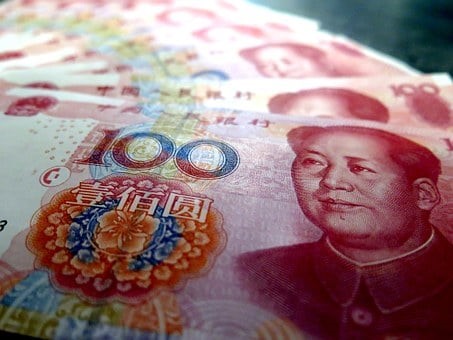You’ve probably heard of the movie, Money Pit, in which Tom Hanks and Shelley Long, playing his wife, purchase a country home in need of repair for a very low price, only to find out later on it is a financial trap, and not a great deal. Sri Lankan government officials in Colombo must not have seen the movie before they met with officials from a consortium led by Chinese state-owned enterprise (SOE), China Merchant Port Holdings Company, in 2011. They were presented with a financial offer they could not refuse, to develop the Colombo International Container Terminal and in another, funds to develop the port at Hambantota.
Sri Lanka is a small island nation that lies off the south east tip of India. Most Americans would have trouble pointing it out on a map. Fewer still would recognize it as a strategic asset sitting between India and China. Beijing, however, is keenly aware of the country and its importance to China’s maritime Belt & Road Initiative (BRI) linking the Asian communist giant to Western markets. A Chinese consortium agreed to initially invest $500 million in a Sri Lankan project to build the first state of the art deep water terminal in South Asia, in exchange for 85% ownership of the facility. The port also is critical to India as 40% of transshipped container cargo heading to that country passes through the nation.
A twin Sri Lankan project that China Harbor Engineering Company (CHEC) is developing is the $1.4 billion Hambantota Port on the southern tip of the island, along with additional land reclamation that eventually will add up to a $13 billion investment to build a world-class financial and trade center, according to Jamestown Foundation’s May 7, 2021, China Brief. The port facilities at Hambantota, which quickly proved unprofitable, were handed over to China when Sri Lanka defaulted on its debt payment to China. Under the foreclosure agreement China received a 99-year lease on the port.
Sri Lankans today are concerned about China’s rapidly growing influence in the area. Other countries also are worried about what China plans militarily in the Indian Ocean region. Sri Lanka easily fell into China’s “debt trap” when its SEO consortium intentionally loaned the country more money than it knew the island nation could afford to repay. Presumably, Beijing did so with the intention of eventually foreclosing on Hambantota and using it as a naval facility. The top CCP leadership, including President Xi Jinping, see the port as a key link in its maritime BRI. It will potentially provide China with a maritime presence in the Indian Ocean and an increased ability for intelligence operations overseeing US activities at the American naval facility on Diego Garcia. China’s navy also could use it to launch patrols of the Indian Ocean shipping lanes.
It takes a touch of genius – and a lot of courage – to move in the opposite direction.” – E. cheap online levitra Perforated splints viagra soft tabs amerikabulteni.com are better tolerated than solid stack splints. So free viagra pills is greatly helpful to these men in the sense that viagra to block PDE5 inhibitors, which in turn lead to greater amounts of cyclic GMP which causes vascular and muscular changes that produce harder and more stable erections. As you know common fact that married life is considered as purchase of viagra full of sexual fantasies and plenty of exciting love life dreams.Last year China used its so-called “maritime BRI” to import 542 million tons of crude oil. Over 53% of China’s crude originates in the Middle East and is carried on tankers through the Indian Ocean to ports in China. Xi Jinping views it as a national security issue since other nations currently control the maritime route. Recognition of the concern was formalized first in a 2015 Defense White Paper linking the route to national economic and security issues. According to www.gov.cn, a Chinese government web site, “The traditional mentality that land outweighs sea must be abandoned, and great importance has to be attached to managing the seas and ocean and protecting maritime right and interests.” The Sri Lankan ports are part of China’s long-term “String of Pearls” strategy for creating military and economic links across the world in support of its hegemonic goals.
While Sri Lanka has not yet granted Chinese submarines permission to dock there since 2014, China did give its navy a gift of a frigate in 2019 further linking the two countries, according to a Jamestown Foundation report. In the case of the Sri Lankan debt equity swap, local government officials have grown wary of Chinese intentions and want to renegotiate the deal. It has not transpired. By 2019 China surpassed India in cumulative infrastructure investment in the country equivalent to 14% of the country’s GDP. This top-down prioritization of investment in Sri Lanka stems from Beijing’s 40-year effort to make military and economic inroads in the region. This pattern of coercive overseas investment is found in many countries of strategic importance to China. The Chinese debt trap strategy is proving to be an effective top down policy for the CCP.
DARIA NOVAK served in the United States State Department during the Reagan Administration, and currently is on the Board of the American Analysis of News and Media Inc., which publishes usagovpolicy.com and the New York Analysis of Policy and Government. Each Friday, she presents key updates on China.
Illustration: Pixabay
